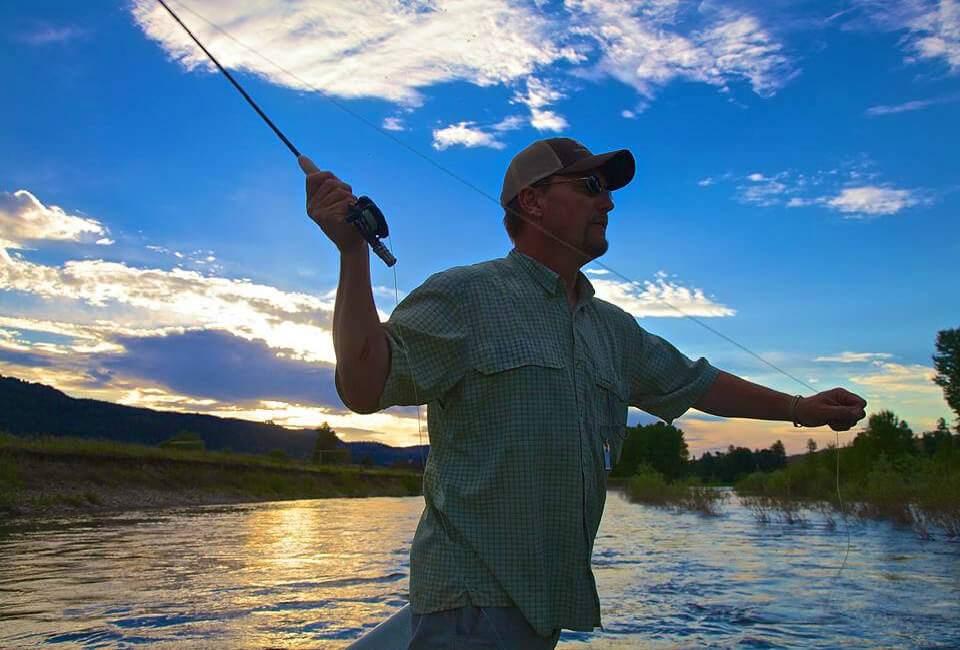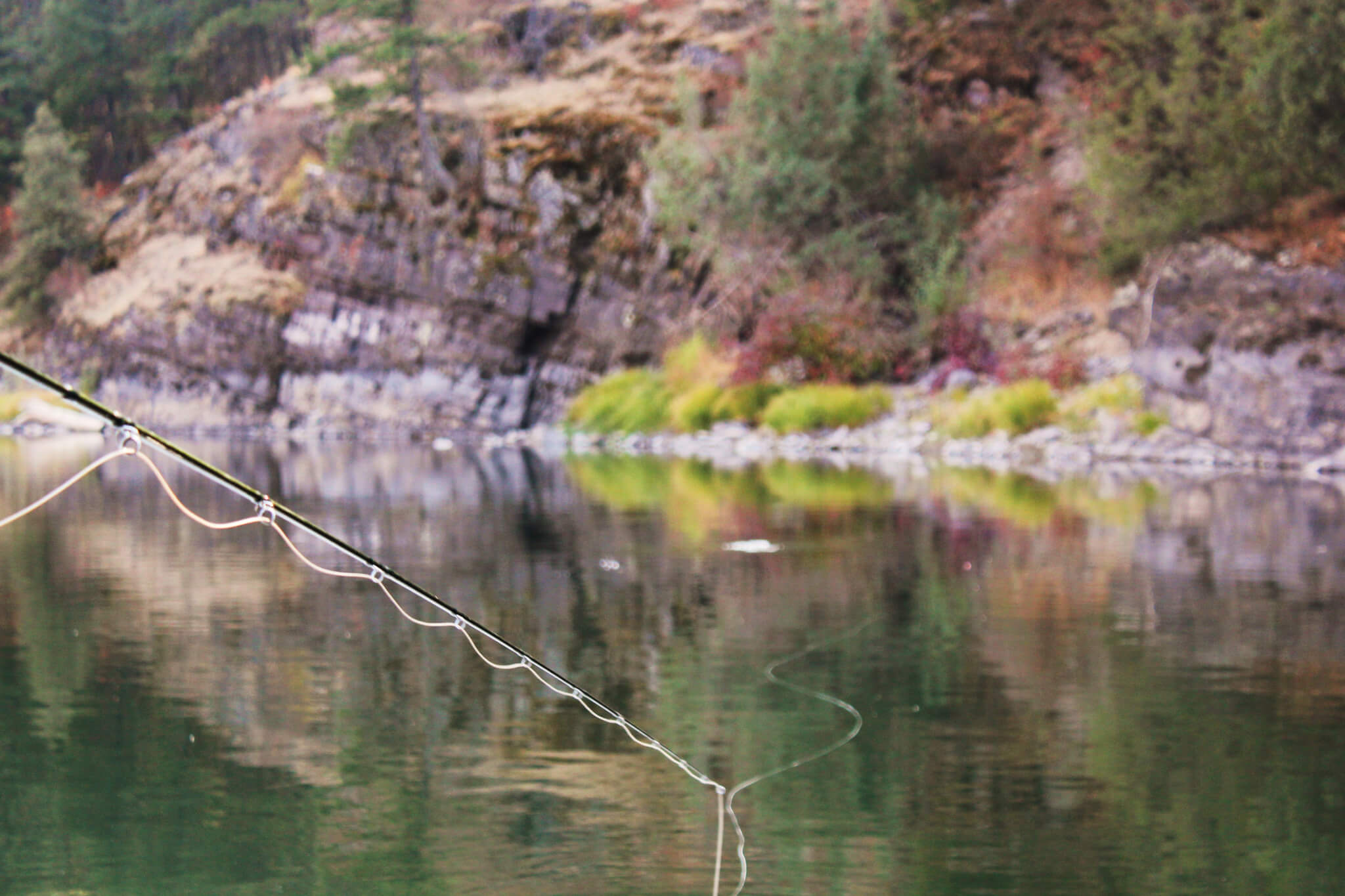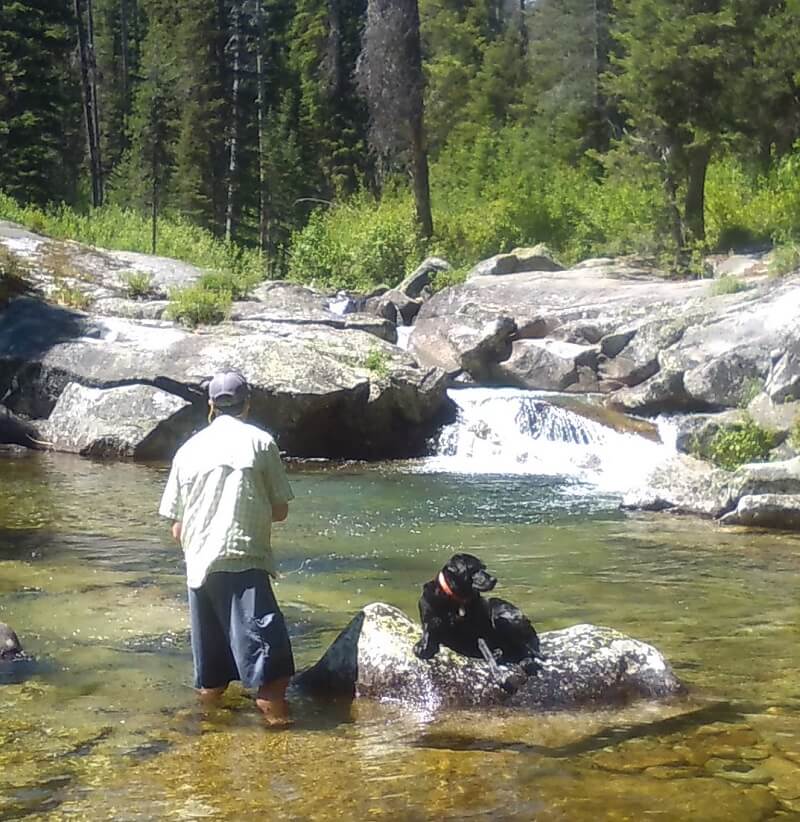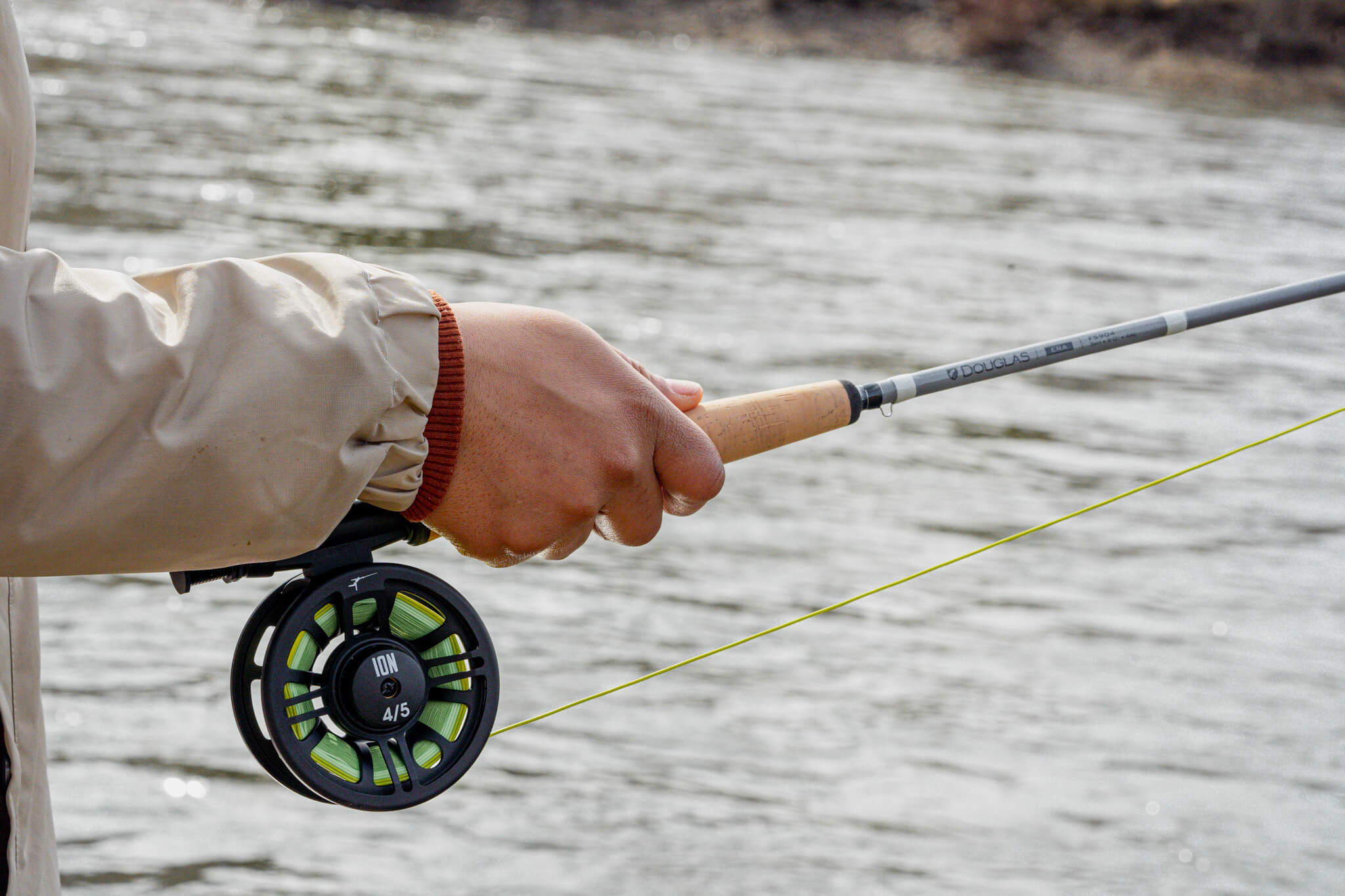The Left Hand in Fly Casting (if you’re a righty!)
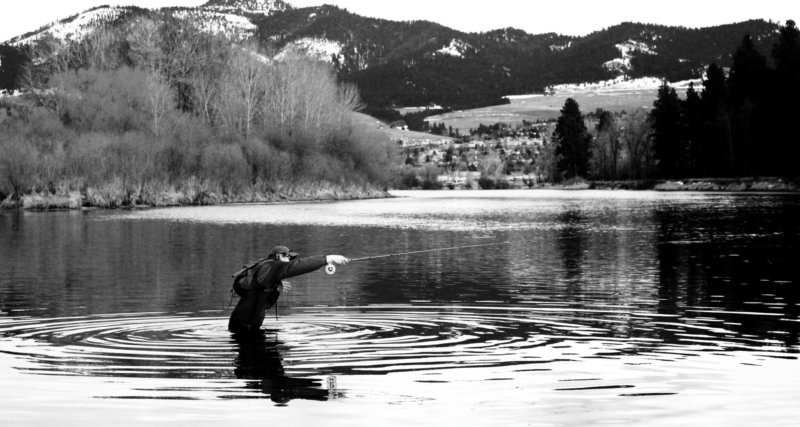
When you practice fly fishing casting, the left hand does very little, if anything. As you find the 10:00 and 2:00 points, learn to accelerate the rod, and then aim the line, the focus is on the right hand. Quite often, the line is tucked under a finger of the right hand, keeping the line the same length. This accelerates the learning curve, as the consistent line length allows a novice to get a “feel” for how the fly rod works with that amount of fly line extended. This is going to change drastically when you get to the water. The line is not a consistent length- it will change with every cast. You’ll need to be able to change the length of the cast, as well as control the line after the cast has hit the water. This is when the left hand becomes critical. If fly casting was a construction company, the right hand would do the work, the left hand would plan and organize. The left hand makes you successful on the water.
To start, the left hand controls casting distance. Two forces act on the fly rod when casting. One is the weight of the line extending beyond the tip of the fly rod. The other is the anchor created by holding the line firmly. When practicing, that anchor is created by tucking the line under a finger. On the water, the left hand is providing the anchor. If you’ve ever dropped the line while casting, you know the rod immediately straightens, as energy drains from the rod.
Knowing the left hand is an anchor, and how it affects the cast, allows you to add line to your cast. To start this process, you need to strip anywhere from 5-15 feet of line from the reel, and let it fall to the ground next to you. This line will be pulled up by the energy of the cast. Get used to having line at your feet when fly fishing. It’s the holding area for casting and line management when fishing. The fly cast doesn’t have the energy to pull line from the reel, only from the ground.
While practicing, you feel the rod load and unload on the forward cast, against the left hand anchor. To extend line during the cast, the left hand must release its anchor. The left hand releases the line just after the rod has unloaded, while the line is traveling forward but not fully extended. This is a timing thing. Release the line too early, and the cast flops. Release the line too late, and the cast’s energy has dissipated to a point where additional line won’t be pulled into the cast. It takes practice to coordinate the timing of the line release, but it’s essential that you get it.
When the line is released to add distance, the left hand does NOT drop the line. When fishing, most anglers hold the line between the thumb and index and/or middle finger. This is the best technique to maintain line control. When the line is released by those fingers, the fingers form a loop around the line. In essence, you’re forming another guide with your fingers. When the line has extended to the appropriate length, you simply collapse the finger loop around the line, stopping the line from extending.
When pushing for distance in a hurry, line can be extended on the back cast as well. You follow the same procedure of releasing the line just after the rod has unloaded, but this time it’s during the back cast. Not surprisingly, this takes a bit of coordination. It’s not simple, but it bears knowing this is possible when you’ve done enough fishing to utilize the knowledge.
The left hand also controls the line when the cast is on the water, especially with an upstream cast. The moment the line lands on the water, the current starts affecting the line. With a direct upstream cast, the line immediately starts floating back down at you. This is a problem when you don’t control the line with the left hand. The right hand is involved in line control as well.
As the line lands on the water to begin your cast, the left hand is coming across to the right hand, passing the line off to the right hand. Yes, the right hand is also holding the rod. The line gets tucked under 1, 2, 3 or all 4 fingers of the right hand against the rod handle. It’s up to you how many fingers- there’s no right or wrong here, do whatever is comfortable. The line isn’t clamped under the finger(s), it’s lightly grasped so the line slides through the fingers.
The line is now floating back at you. If left unattended, the line gets below you and forms a loop. At the base of the loop, the line is traveling at twice the speed of the current, rapidly removing slack from your cast. Since we know a drag free drift is critical to presentation, the loss of slack is detrimental to your drift. You need to control the drifting fly line by not allowing the line to get below you during the cast.
The left hand keeps the fly line from getting below you. The left hand comes up behind the fingers holding the line in the right hand, grips the line and starts moving backwards- moving backwards at the same pace as the current is delivering the line to you. When the left hand has gone back as far as comfortable, drop the line, return to the fingers on the handle, regrip the line and do it again. The line is held in the right hand to give the left hand a consistent point to return to after moving backwards. Sometimes this is a very sedate, slow movement. Sometimes it’s a frantic pull, pull, pull. It is completely dependent on the speed of the current.
Fast or slow, the left hand must move at the exact same pace as the current. Go too slowly, and the loop forms below you, removing slack, creating drag. Go too fast and the tug of the left hand will remove the slack. The left hand must be tuned into the current speed to maximize your drift.
Let’s add another component. While the left hand is controlling the line according to the drift, the right hand is using the rod to mend. (Mending) In order to mend, the line must be held firmly. This is another anchor point, but instead of being used in casting, the anchor point is being used to mend. In essence, a mend is a very tiny cast. You can’t mend if the line is unanchored. The left and right hand must work together supplying an anchor point for mending, while stripping to control the line coming back at you. It’s quite the dance your hands and rod go through to get a drag free drift.
The left hand also controls the action of your streamer when you choose to fish that way. Again, the fly line is underneath the fingers of the right hand, and the left hand contacting the line directly behind the fingers.
Streamers are cast down-stream and across. They’re fished on a tight line, just as you would fish a lure. Streamers have no built in action (wiggle bibs, spinning blades) other than material choice, so any fish-enticing action is imparted to your fly with the left hand. NOT through the rod tip, which is what anglers naturally do. Working the streamer with the rod tip may look tantalizing, but that method results in fewer hookups, for two reasons.
First, as you move the rod tip away from the streamer, you lessen the length in which you can set the hook. For example, if you move the rod tip backwards 9 feet to activate the streamer, upon the strike, the rod tip can only move 3-5 feet further backward during the hook set. That’s not a lot of distance to set a hook firmly. Which segues into reason two. A fly rod is designed for casting. The 9 foot or greater length is designed to flex when throwing the lighter fly lines used for trout fishing. When setting the hook, the fly rod bends very deeply, working against the hook set. The further the rod tip moves during the hook set, the better chance you have to hook the fish.
Which brings us back to the left hand. When streamer fishing, point the rod directly at the fly. Activate the fly by manipulating the fly line with the left hand– using the same motion you use to control line when fishing. But instead of matching current speed with your left hand, you’re pulling/tugging the fly back against the current. This can be done rhythmically or arrythmically, depending on the action you’re trying to impart to the streamer. Again, as the line is pulled towards you, the left hand drops the line and immediately goes to the back of the fingers to re-contact the line and begin the fly activation again. You do this until the fly has passed through the zone, and then you cast again. However, if the trout didn’t respond to your action the first time, change the action. If you moved the fly rhythmically, try moving it erratically. If you used short, fast strips, try longer, slower strips. Let the trout educate your left hand for what they want that day.
When you’re streamer fishing, you also use the left hand during the hook set. Known as the strip set, the left hand pulls on the line while the rod is moving backwards. This adds a lot of power to the hook set, but can definitely over power as well, breaking off the fly. It takes practice and time on the water, but you’ll learn in time when the hook is set, and STOP yanking with the left hand.
As you see, the left hand is as active in fly fishing as the right hand. While adding no energy to the cast, the left hand controls the line on the water. Some may argue that’s more important than the ability to cast. Maybe, but we think it’s better to be able to do both well!
